Types of Poker Players
Through years of observation, analysis and countless hands at the table, I have come to the conclusion that poker players can essentially be categorized into three different types. Understanding these categories and being able to adapt your strategy against each of them is paramount for those looking to surpass their current level of play and compete more effectively in the complex arena of poker.
In my experience, recognizing the characteristics that define each type of player and adjusting your approach accordingly can significantly improve your results at the table. Whether it’s exploiting the weaknesses of less experienced opponents or countering the strategies of seasoned veterans, being able to read and react to different types of players is a key component of advanced poker strategy.
Later in the text, I will discuss the intricacies of these three main types of poker players. Drawing on personal encounters and insights, I aim to provide a comprehensive overview that will equip you with the knowledge to identify and effectively deal with any opponent you may encounter. Understanding the spectrum of player types, from cautious and calculating to bold and aggressive, is an invaluable tool in the arsenal of any serious poker player. Join me as we explore these categories in detail, shedding light on the subtleties that define the competitive poker environment.
Tight players
Tight players stand out for their selective and disciplined strategy. Entering the game through a prism of caution and precision, tight players are those who carefully control the number of hands they choose to play, typically participating in only 10-20% of all hands. This restrained approach is characterized by careful hand selection, favoring premium hands and positions that offer the highest probability of success.
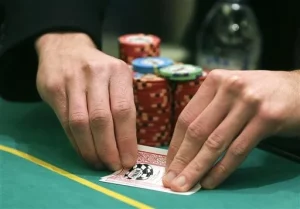
The essence of tight play lies in its underlying principle: quality over quantity. By limiting their play to a narrow range of strong starting hands, Tight players seek to minimize risk and avoid marginal situations where the optimal solution is less obvious. This strategy, by reducing the frequency of play, increases a player’s ability to take advantage of favorable opportunities with a greater degree of confidence and control.
Within the realm of tate players, there is a subtle division based on their approach to aggression. This classification divides players into two distinct subtypes: less passive (tight-passive) and more aggressive (tight-aggressive).
Tight-passive players, while selective in their hand selection, tend to take a more cautious approach post-flop, often choosing to check or call rather than bet or raise. This style minimizes potential losses, but can also limit gains, as it may not fully exploit the value of strong hands or put enough pressure on opponents.
Conversely, tight-aggressive players combine the selectivity of tight play with an active approach to bets and raises. This strategy not only allows them to utilize the power of hand selection, but also to use aggression to build banks, steal blinds, and force their opponents to make tough decisions. Tight-aggressive players often look more formidable and command respect at the table, using their image to maximize profits from fewer hands played.
Playing Strategy Against Tight Players
Throughout my poker career, I’ve encountered many different styles of play, but learning how to play effectively against tigh players has been an invaluable skill for me. Tigh players, with their disciplined approach and selective hand range, are a formidable problem at the poker table. Their strength lies in their ability to wait patiently for premium hands and use their image at the table to apply pressure when they hit the pot. Tigh players often refuse blinds and often fold, but when they do enter the game, they likely have a strong range and will not hesitate to re-raise rather than just call. Therefore, it is very important to make sure that when playing against them you have a hand that can withstand their aggression.
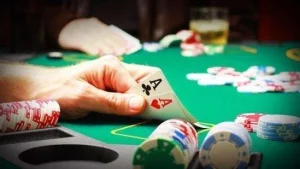
Playing against tigh players requires a multi-faceted strategy to exploit the specific nuances of their conservative style of play. Here are a few strategies that I find effective in different situations:
Fold to their raises: Given the selective range of the tigh player, one simple approach is to fold to any raise he makes, especially from early position. This respects the strength their raise implies and avoids costly confrontations with potentially weak hands.
Play weaker hands against them: This strategy is more suited to experienced players who can navigate the postflop game with a wider range. By playing more hands, especially in position, you will be able to take advantage of their tightness and win small pots more often. This approach involves a delicate balance, as it requires the ability to fold when a tight player shows significant strength.
Aggressive play with low hands: Sometimes using the image of a tigh player at the table can work in your favor. Tigh players can sometimes try to exploit their image by playing weak hands to steal blinds or control the size of the pot. By aggressively playing weak hands, you can counter their attempts to control the pot by increasing your equity on the flop by reducing the field. This strategy breaks their control over the dynamics of the game, forcing them to counter with unexpected aggression.
Against tight players, the strategy comes down to recognizing the range of strong hands and adjusting your play to take advantage of their predictability. This involves a combination of caution, aggressiveness and strategic flexibility. Although tigh players are some of the most difficult opponents because of their disciplined approach and hand strength, adapting your strategy to exploit the limitations inherent in their style of play can tilt the odds in your favor.
Loose Players
During my time playing poker I have encountered a lot of players and as I said before all players can be divided into several types of players, the scariest one is the tight player, but there are also other players that we will talk about. Among all players, there are often loose players who are willing to play a large number of hands, which determines their strategy and affects how you should adapt to play against them. In my experience, these players fall into two different categories: loose-aggressive and loose.
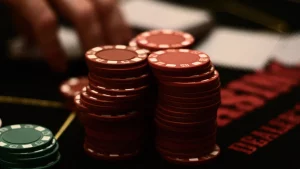
Loose-aggressive players, as their name implies, don’t just actively play a wide range of hands, they complement this with bold betting, often resorting to bluffing and big raises to put pressure on their opponents. This approach makes them unpredictable and sometimes formidable opponents. At the other end are players who engage in losing behavior, but not necessarily aggressive. They too play a lot of hands, but without aggressive betting patterns. Their strategy often lacks the conviction of their loose-aggressive players, making their approach less intimidating.
By honing my skills and strategies on countless hands, I have developed effective tactics to deal with the challenges of playing against loose players. Against a loose aggressive player, patience until a medium strength hand such as jack 10 is dealt can be crucial. This hand provides a solid foundation for an aggressive counter-strategy. Given that loose aggressive players tend to bluff, timely aggressive play can turn the tide of the game. It’s important to closely observe their bets and the hands they showdown to determine the best times to counter.
Confronting simply weak players requires a different approach. Such players are relatively easy to identify and exploit. Their wide range of hands combined with a lack of aggressive betting opens up opportunities for assertive raises. By applying pressure with strategic re-raises, you can often force them to fold by exploiting their weak positions.
In essence, adapting to the dynamics that loose players bring to the table is a multi-faceted process. It requires a combination of patience, aggression, and keen observation. Recognizing their tendencies will not only prepare you for effective countermeasures, but will also enrich your overall strategic acumen. Whether you’re facing a bluff-aggressive or exploiting the caution of a merely loose player, the key is to adjust your game to exploit their weaknesses while maintaining control of the game.
Maniacs Players
Maniacs who are particularly intriguing and challenging opponents. Their style of play, which is a disconcerting mixture of chaotic aggression and unpredictable betting, makes them enigmatic opponents. They oscillate between the aggression characteristic of loose players and the restraint often associated with a tougher game, while betting with a fury that seems almost reckless.
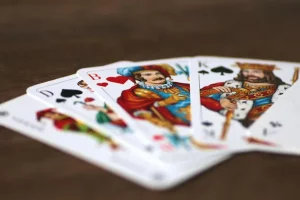
Poker maniacs, as they are aptly called, are players who thrive on aggression and unpredictability. Their hallmark is an intense level of aggression, often disproportionate to the hand they are holding. Maniacs don’t just play cards, they play the game itself, using pressure and intimidation as their primary tools. They bet, raise, and re-raise at a frequency far above the norm, often regardless of the strength of their hand. This approach is designed to frustrate their opponents, force them to make mistakes and create opportunities to capitalize on the resulting chaos.
Identifying a poker maniac is crucial to adjusting your strategy and preserving your chips. While at first glance it may appear that maniacs play a normal game, certain signs give away their true nature. Typically, a maniac possesses a larger than average chip stack, indicating their aggressive and risky style of play. This is not only a result of luck, but also a direct consequence of their willingness to participate in the game more frequently, betting and raising at a rate that is much higher than the average player.
In addition, maniacs show a propensity to participate in an unusually large number of hands, often disregarding the usual hand selection criteria. Their aggressive stance is also evidenced by frequent raises and raises, a tactic used not only against strong hands, but also as a consistent element of their overall strategy. Bluffing is another cornerstone of the maniac’s playbook and is used frequently and boldly, which can be disorienting to the untrained.
Strategy of Playing Against Maniacs in Poker
Through trial and error, I have honed strategies that effectively counter their erratic style, allowing me to turn their recklessness to my advantage. Here I describe the tactics that have helped me succeed against poker maniacs:
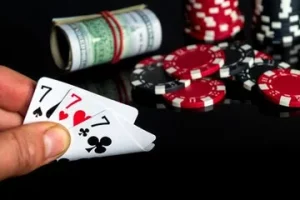
Never bluff against a maniac: the very essence of a maniac’s playing style is rooted in aggression, often without regard to hand strength. Trying to bluff in the face of such unpredictability is akin to playing with fire. You realize early on that bluffing against a player who rarely backs down is not only futile, but potentially expensive.
Wait for a good hand: Patience is your greatest ally against a maniac. By waiting for a strong hand, you will be able to capitalize on their aggressive betting. When that hand arrives, be ready to call raises or, better yet, re-raise. This tactic is to allow the maniac to increase the pot, thereby increasing your potential winnings if you have a stronger hand.
Play tight and encourage bluffing: Tight play is the opposite of the maniac’s approach and serves as an effective counter-strategy. By selectively playing fewer strong hands, you not only save your chips, but also create an opportunity for the maniac to overextend themselves. Encouraging them to bluff, especially in situations where you have a strong hand, can result in significant gains as they contribute to the pot with little to no chance of winning.
Use positional advantage: By being in a later position, you can observe the maniac’s actions before making your move. Use this to your advantage by adjusting your play based on his actions. If the maniac is betting big, consider calling with strong hands and folding with marginal hands. Positional awareness can provide critical insight into when to step in and when to back off.
Maintain emotional control: Perhaps the most important aspect of playing against a maniac is not letting his erratic play style affect your emotional state. Maniacs love to create chaos and provoke reactions. By staying calm and focused, you rob them of the psychological advantage they seek by allowing you to make rational, informed decisions.
Adjust to table dynamics: As the game progresses, the dynamics of the table will change. Keep an eye out for any changes in your maniac’s play style and how other players react to them. Flexing your strategy by following the basic principles outlined here can further increase your effectiveness against the maniac.

